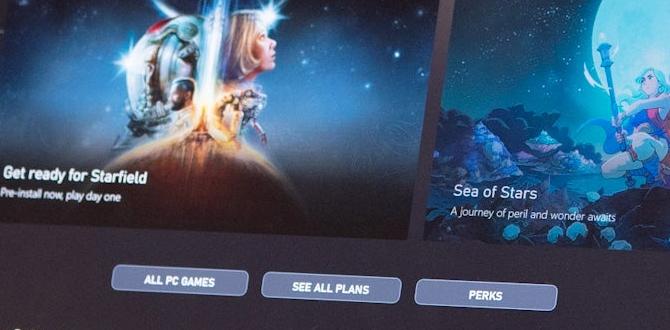Discover essential Bali Ubud walkable routes and maps to effortlessly explore the heart of this cultural hub on foot. Navigate popular paths, understand distances, and find key landmarks with our easy-to-use guide for a stress-free adventure.
Ubud, Bali, is a dream destination for many, offering lush rice paddies and vibrant culture. But getting around can sometimes feel a little… complicated, especially for first-time visitors. Many travelers find themselves wondering how to best experience Ubud’s charm without relying solely on taxis or scooters.
The good news is that much of what makes Ubud special is perfectly accessible on foot! This guide is here to make your exploration simple and enjoyable, focusing on the best walkable routes and essential maps. We’ll break down how to navigate this beautiful town with confidence, ensuring you soak in every bit of its magic.
Why Walking is the Best Way to Explore Ubud
Walking in Ubud isn’t just a way to get from point A to point B; it’s an experience in itself. The town center is surprisingly compact, and many of its most enchanting sights are tucked away down narrow lanes and charming pathways. Stepping out on foot allows you to truly immerse yourself in the local atmosphere. You can stop spontaneously at a roadside fruit stand, admire intricate temple carvings, or simply listen to the sounds of the gamelan music drifting from a nearby compound.
For a traveler, especially those who might be managing luggage, carrying essentials, or perhaps dealing with the added considerations of travel with children or personal needs like ensuring comfort with adult or child diapers for longer excursions, walking offers unparalleled control and peace. It bypasses the need to navigate scooter rentals, deal with traffic, or arrange transportation for short distances. Plus, it’s a fantastic way to stay active while enjoying your vacation. You control your pace, your stops, and your discoveries.
Understanding Ubud’s Layout
Ubud’s heart is generally considered to be its main street, Jalan Raya Ubud, which runs east-west. Parallel to this, to the north and south, are other key roads and smaller lanes that lead to hidden gems. The town isn’t a sprawling metropolis; it’s more of a vibrant, bustling hub surrounded by verdant landscapes. Understanding this central core is the first step to mastering your walking routes.
For a more detailed overview of urban planning principles that often influence town layouts like Ubud’s, you can explore resources from the American Planning Association. While Ubud has its own unique character, understanding the general concepts of walkable urban design can help you appreciate its structure better.
Essential Ubud Walkable Routes and Maps
To help you navigate, we’ve outlined a few key routes that cover popular attractions and offer a great walking experience. These routes are designed to be beginner-friendly and can be adapted based on your energy levels and interests.
Route 1: The Cultural Heart Walk
This is the quintessential Ubud walk, perfect for getting acquainted with the town’s main attractions. It’s relatively flat and covers some of the most iconic spots.
- Starting Point: Ubud Royal Palace (Puri Saren Agung)
- Approximate Distance: 1.5 km (0.9 miles)
- Estimated Time: 30-60 minutes (without stops)
Steps for Route 1:
- Begin at the impressive Ubud Royal Palace on Jalan Raya Ubud. Take some time to admire the traditional Balinese architecture from the outside.
- Cross Jalan Raya Ubud to visit the Ubud Traditional Art Market directly opposite the palace. Here you can find souvenirs, handicrafts, and sarongs. Remember to haggle gently!
- Continue east along Jalan Raya Ubud. You’ll pass numerous cafes, restaurants, and shops. Enjoy the vibrant street life.
- After about 5-10 minutes of walking east, look for signs directing you to the Sacred Monkey Forest Sanctuary on Jalan Monkey Forest. This is a slight detour south from Jalan Raya Ubud, but it’s a must-see. Explore the sanctuary, keeping a safe distance from the macaques and securing your belongings.
- Exit the Monkey Forest and head back towards Jalan Raya Ubud. You can choose to walk further east or turn south onto Jalan Hanoman, which is another street brimming with local eateries and boutiques.
- If you continue east on Jalan Raya Ubud, you’ll eventually reach the Ubud Post Office and the Ubud Tourist Information Center. This is a good point to orient yourself further or ask for directions.
- For a longer walk, you can continue east and then head north towards Jalan Bisma, which offers more artisanal shops and cafes, or explore the smaller lanes branching off Jalan Hanoman.
Route 2: The Rice Terrace Vista Walk
This route takes you slightly out of the immediate town center to experience the iconic rice terraces, offering stunning views and a more tranquil atmosphere.
- Starting Point: The edge of Ubud town, near Jalan Raya Campuhan.
- Approximate Distance: 3 km (1.9 miles) loop
- Estimated Time: 1-2 hours (including photo stops)
Steps for Route 2:
- Start by heading west on Jalan Raya Ubud until you reach the intersection with Jalan Bangkiang Sidem.
- Turn south onto Jalan Bangkiang Sidem and walk until you see signs for the Campuhan Ridge Walk, typically accessed via a small path. This entrance is often near Warwick Ibah Luxury Villas & Spas or The Suku.
- Follow the paved path of the Campuhan Ridge Walk. This gentle trail meanders through lush valleys and offers breathtaking panoramic views of the surrounding rice fields and rivers.
- Keep walking along the ridge. You’ll encounter two prominent hills. The path is well-maintained and generally easy to navigate.
- The ridge walk eventually leads you towards the village of Sanggingan.
- As you descend from the ridge, you’ll find yourself on roads that connect back towards the main Ubud area or offer further exploration opportunities into local villages. You can choose to loop back by taking smaller roads that head east, or follow a more direct route back towards Jalan Raya Ubud.
- Consider stopping at a cafe in Sanggingan for a refreshing drink before making your way back.
Route 3: The Art and Spirituality Trail
This route connects several spiritual sites and art galleries, offering a deeper dive into Ubud’s cultural soul.
- Starting Point: Ubud Royal Palace.
- Approximate Distance: 2 km (1.2 miles)
- Estimated Time: 45-90 minutes (depending on gallery visits)
Steps for Route 3:
- Start at the Ubud Royal Palace.
- Head east along Jalan Raya Ubud.
- Turn south onto Jalan Hanoman. Explore the many art galleries and studios along this street.
- Continue south on Jalan Hanoman, which eventually merges with Jalan Bumi Sebalah.
- Follow Jalan Bumi Sebalah until you reach the Pura Saraswati Temple, easily recognizable by its stunning lotus pond. It’s located in the town center, accessible from Jalan Raya Ubud.
- From Pura Saraswati, you can walk back towards Jalan Hanoman or explore connecting lanes.
- A short walk east from Jalan Raya Ubud (near the post office) will lead you to the Neka Art Museum or the Agung Rai Museum of Art (ARMA). These are slightly further afield but are significant cultural attractions. Depending on your starting point and how much you wish to see, you might consider a short taxi ride to these if walking is not preferred for the entire distance. The key is to acknowledge their proximity for a walking-based exploration.
- Many smaller galleries and workshops dot the streets between these main points, so keep an eye out for intriguing displays.
Essential Tools for Your Ubud Walks
To make your walking adventures as comfortable and safe as possible, here are a few essentials:
- Offline Maps: Download maps of Ubud using Google Maps or Maps.me before you arrive. This is crucial as Wi-Fi can be spotty.
- Comfortable Walking Shoes: Ubud’s paths can be uneven, and you’ll be doing a lot of walking. Prioritize comfort.
- Lightweight Backpack: For carrying water, snacks, sunscreen, a small first-aid kit, and any purchases. If you’re traveling with children, a good-quality backpack can be invaluable for carrying their essentials, along with any necessary items like child diapers or wipes, ensuring hands are free for little ones.
- Reusable Water Bottle: Stay hydrated. Many cafes and accommodations offer refills.
- Sun Protection: A hat, sunglasses, and high-SPF sunscreen are non-negotiable in the tropical sun.
- Insect Repellent: Especially important for venturing near the Monkey Forest or rice paddies, particularly in the late afternoon and early morning.
- Small First-Aid Kit: Include plasters, antiseptic wipes, and any personal medications.
- Cash: For market purchases, small cafes, and local transport if needed.
Map Resources for Ubud
While physical maps can be helpful, digital resources are often the most convenient for real-time navigation.
- Google Maps: Excellent for general navigation, finding points of interest, and downloading offline maps. You can search for specific locations like “Ubud Royal Palace” or “Sacred Monkey Forest Sanctuary.”
- Maps.me: Another popular app for offline maps that’s often praised for its detail in less-trafficked areas.
- Local Tourist Information Centers: Once in Ubud, you can often pick up free printable maps or brochures from the tourist information center, which can supplement your digital tools.
For a visual overview, you can often find user-generated maps or recommended walking routes on travel blogs and forums. Searching for “Ubud walking map” on platforms like Pinterest or travel guide websites can yield very helpful visual aids.
Practical Tips for Walking in Ubud
Here are some additional tips to enhance your walking experience:
- Start Early: Beat the heat and the crowds by starting your walks in the morning.
- Be Aware of Your Surroundings: Ubud’s streets can be busy with scooters. Always stay aware, especially when crossing roads.
- Embrace the Unexpected: Some of the best discoveries are made when you wander off the ‘main’ route. Don’t be afraid to explore the smaller lanes.
- Respect Local Culture: When visiting temples, dress modestly (shoulders and knees covered). Sarongs are often available for rent or loan at temple entrances.
- Stay Hydrated and Take Breaks: The tropical climate can be draining. Drink plenty of water and take breaks in shaded cafes. If managing travel with children or if you require personal comfort items like adult or child diapers, ensure you have a comfortable, discreet bag where these can be easily accessed during your breaks.
- Learn a Few Indonesian Phrases: “Terima kasih” (thank you) and “Selamat pagi” (good morning) go a long way.
Walking Distances and Times Table
Here’s a quick reference for common walking routes and estimated times. Remember that these are approximate and can vary based on your pace, the number of stops you make, and traffic conditions.
| Route Name | Key Attractions | Approximate Distance | Estimated Walking Time (Without Stops) |
|---|---|---|---|
| Cultural Heart Walk | Royal Palace, Art Market, Monkey Forest (detour) | 1.5 km (0.9 miles) | 30-60 minutes |
| Campuhan Ridge Walk | Rice Terraces, Valley Views | 3 km (1.9 miles) loop | 1-2 hours |
| Art and Spirituality Trail | Temples, Art Galleries, Museums (nearby) | 2 km (1.2 miles) | 45-90 minutes |
| Jalan Hanoman Exploration | Shops, Cafes, Artisan Workshops | 1 km (0.6 miles) | 20-40 minutes |
| Jalan Bisma Discovery | Boutiques, Restaurants, Yoga Studios | 1 km (0.6 miles) | 20-40 minutes |
Accessibility and Considerations for All Travelers
Ubud is a beautiful place, and we want everyone to enjoy it fully. While many main streets are paved, some smaller lanes can be uneven. The Campuhan Ridge Walk is a paved path but has inclines. For travelers who may need to manage longer days out or require extra comfort and discretion, having readily available supplies like comfortable adult diapers or child diapers can significantly reduce stress and allow for more freedom to explore. Planning for accessible routes and comfortable pacing is key.
If you have specific mobility needs, sticking to the main roads like Jalan Raya Ubud, Jalan Hanoman, and parts of Jalan Bisma will offer the smoothest experience. Always check with your accommodation about the accessibility of nearby routes.
Traveling with Children
When exploring Ubud with kids, shorter walks are often best. The area around the Royal Palace and the Art Market is generally easy. The Monkey Forest can be exciting but requires constant supervision. For the Campuhan Ridge Walk, consider if your children are comfortable walking longer distances, or bring a carrier if they are too young. Having snacks and drinks readily available in your backpack is a lifesaver. And of course, ensuring you have enough child diapers and wipes packed can make a huge difference in keeping everyone happy and comfortable.
Adult Diapers and Travel Comfort
For adults who require them, traveling to and exploring Ubud can be made much more comfortable with reliable adult diapers. Choosing breathable, absorbent options designed for active use can ensure you feel secure and dry, allowing you to focus on the beauty around you rather than worrying about leaks or discomfort. Keeping a few in a discreet, easily accessible part of your backpack means you’re prepared for longer strolls or unexpected delays. Many brands offer discreet designs perfect for travel.
FAQs
Q1: Is Ubud safe to walk around?
Yes, Ubud is generally considered very safe for walking. Petty theft can occur in crowded areas like markets, so it’s always wise to be aware of your belongings. The main streets are well-lit, and the atmosphere is friendly.
Q2: How far is the Sacred Monkey Forest from Jalan Raya Ubud?
The entrance to the Sacred Monkey Forest is just a short walk (about 5-10 minutes) south from the main street, Jalan Raya Ubud, via Jalan Monkey Forest. It’s easily accessible on foot.
Q3: Can I walk to the Tegalalang Rice Terraces from Ubud center?
No, the Tegalalang Rice Terraces are located about 8-10 km north of Ubud center. This is too far to walk comfortably as part of a typical day exploration. You would need to hire a taxi, scooter, or join a tour to visit Tegalalang.
Q4: What is the best time of day for walking in Ubud?
The early morning (7 AM to 10 AM) and late afternoon (4 PM to 6 PM) are the most comfortable times. The midday sun can be intense, so staying hydrated and seeking shade is important during those hours.





